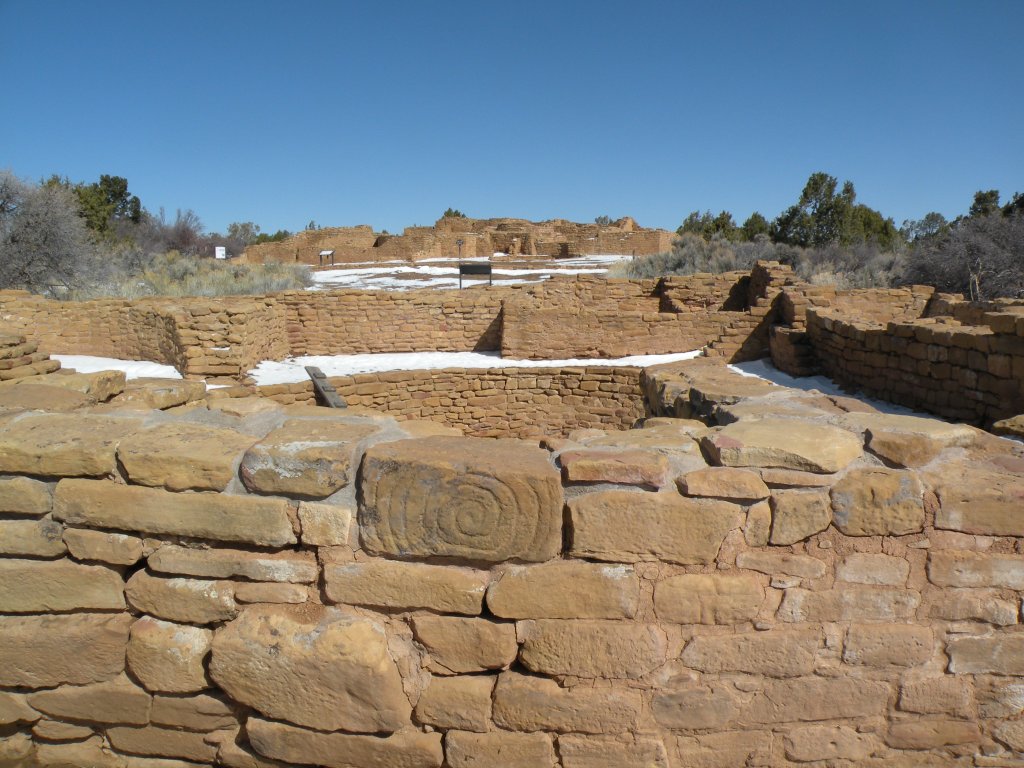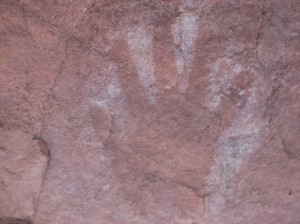-Justice Greg Hobbs
Craig Childs, intrepid adventurer, incomparable storyteller, dynamic speaker, in House of Rain charts his own journey into the Four Corners migration of the Ancestral Pueblo people, taking us along.
 Why did they vanish from Southwestern Colorado around 1280, leaving behind sealed granaries, stacked-up bowls, and tools arranged for use as if, tomorrow, they might return?
Why did they vanish from Southwestern Colorado around 1280, leaving behind sealed granaries, stacked-up bowls, and tools arranged for use as if, tomorrow, they might return?
Why not find out for yourself? Walk with Craig from New Mexico’s Chaco Canyon up the great north road to Colorado’s Chimney Rock, then west to Mesa Verde and the great sagebrush plain at Hovenweep, stepping into Utah, then south to Arizona’s Mogollon Rim and ultimately into Mexico at Casas Grande centuries later.
Follow the T-shaped doorway, the signature architectural marker of their abode and passage. It’s the perfect sign and symbol of the inverted mountain, where a sacred spring breaks forth from some deep subterranean place into what the Navajos continue to call this “glittering world,” a place to drink and farm and live in water pockets of community with your clan and domesticated turkeys.
 You’ll find them not really disappeared. They’ve left their hands imprinted all over the face of sandstone cliffs, along with mountain sheep and the spiraling swirl of their creation story carved into petroglyphs on the front of kiva cornerstones. You’ll find the water frogs they carved, inlaid with turquoise eyes, at the back of alcove dwellings, continuing to offer blessings for a trickle. Shards of their drinking mugs and shriveled corncobs litter the landscape of your inquiry.
You’ll find them not really disappeared. They’ve left their hands imprinted all over the face of sandstone cliffs, along with mountain sheep and the spiraling swirl of their creation story carved into petroglyphs on the front of kiva cornerstones. You’ll find the water frogs they carved, inlaid with turquoise eyes, at the back of alcove dwellings, continuing to offer blessings for a trickle. Shards of their drinking mugs and shriveled corncobs litter the landscape of your inquiry.
The roads into Chaco from Central America you’ll discover are trade and pilgrimage routes, decorated with macaw  feathers and sea shells fashioned into necklaces. On the top of bluffs along the way to Chimney Rock, beacon fires light the way. Here, weary travelers stopped at way stations for food and shelter on their journey to a new home, or back to their homes after gathering in Chaco for a solstice ceremony. Today, the Hopi on their mesas, carved from the womb of a vast enduring sky, claim these people for ancestors.
feathers and sea shells fashioned into necklaces. On the top of bluffs along the way to Chimney Rock, beacon fires light the way. Here, weary travelers stopped at way stations for food and shelter on their journey to a new home, or back to their homes after gathering in Chaco for a solstice ceremony. Today, the Hopi on their mesas, carved from the womb of a vast enduring sky, claim these people for ancestors.
It’s also the story of conflict, clan on clan, in a time of devastating drought when the people gathered out of scattered farmsteads into villages of 500 to 800 people on the great sagebrush plain. They built walls and watch towers, encircling their dwellings and life-giving springs. Some of them died at the hands of raiders, desperate for stored-up corn in a time of famine. Those who saw the trouble coming, and those who survived the attacks, moved on in search of other living places, as for centuries their ancestors had migrated across the face of the Colorado River plateau.
I don’t suggest you try to swim a flash flood as Craig and his hiking companion do. It’s enough to hear the spill of his words describe the suck of a muddy froth they were lucky to climb out of. I do suggest you take this scintillating book in hand and mark, piece by piece, the places you will surely want to visit if you haven’t already.
I invite you through this blog over this coming month to talk about your favorite passages. What have you seen and heard out there that you will write and share with us?
Greg Hobbs is a Justice of the Colorado Supreme Court who, with his wife Bobbie, delights in taking their grandchildren into the Anasazi country.

 Print
Print
Justice Hobbs really captures the “deep history” Craig Childs brings to the topic. It’s a great perspective for the entire year of Water 2012!
Deep history is right! Thank you Greg—you’ve capture my imagination and sense of nostalgia just as Craig Childs does through his writing and talks.
I first read ‘House of Rain’ when I moved to Northern Arizona’s Painted Desert—a place as magical as any. We were living in an off-grid geodesic dome, four miles down a dirt road and across a massive wash that would rage with monsoon rains or melting snow as it flowed down from the Navajo Reservation. A neighbor who vacationed in the area recommended that I read Childs’ books—I read every night—fueling a true-myth of the incredible and quiet place where I found myself.
I left Arizona but returned to work and visit for the following few years and constantly felt like I was able to trace time. Not just thinking of how someone else lived there, but seeing clear marks of erosion. I knew where water trickled down the badlands or how full that wash ran during the last flash flood—not because I was there, but because it was visible. I would trace tiny beetle and mouse prints in the sand, the skeleton of a cow killed in a flood event, pot sherds and pithouses, and regularly found the bones of Triassic archosaurs—constant reminders and marks of time all there for everyone to see. A combination of human and natural history and prehistory, which can’t really be separated, can they? It’s one big story that Childs and Justice Hobbs tell well.
Well said, Craig, Caitlin and Justice Hobbs. Ahhh, “The Secret Knowledge of Water” is at work in all of these writings. And yes, that is another Childs’ book worth reading.